In the automotive world, appearances can be deceiving. While exotic supercars with their dramatic styling, scissor doors, and screaming engines announce their performance intentions from blocks away, another breed of high-performance machine lurks in the shadows of the sleeper car.
These unassuming vehicles hide extraordinary performance capabilities beneath ordinary exteriors, giving them the ability to surprise unsuspecting exotic car owners at stoplights and on highways across the world.
The sleeper car philosophy embraces stealth and subtlety while delivering a performance that rivals or exceeds vehicles costing many times more.
Often modified by passionate enthusiasts or occasionally created by manufacturers who understand the appeal of understated potency, these machines embody the “speak softly but carry a big stick” approach to automotive performance.
From family sedans hiding turbocharged hearts to wagons that can embarrass Ferraris in a straight line, the following twelve vehicles represent the ultimate sleepers cars that blend into traffic until the light turns green, at which point they reveal their true nature as wolves in sheep’s clothing.
Their capability to outrun modern exotics makes them particularly special, creating moments of disbelief when ordinary-looking vehicles disappear into the distance, leaving exotic car owners wondering what just happened.
1. Volvo 850 R Estate
The Volvo 850 R Estate stands as perhaps the ultimate automotive contradiction a boxy Swedish station wagon capable of humbling many supercars of its era and even some modern exotics.
Introduced in 1996, this unassuming family hauler represented the perfect sleeper: practical, understated, and unexpectedly rapid.
Beneath its squared-off exterior, the 850 R Estate packed a turbocharged 2.3-liter five-cylinder engine producing 250 horsepower and 258 lb-ft of torque figures that might seem modest by today’s standards but were considerable for a mid-1990s wagon.
The engine’s distinctive five-cylinder warble provided a subtle audio clue to its performance potential, though most observers simply saw another practical Volvo wagon.
In the hands of enthusiast owners, these engines have proven remarkably robust, with modified examples easily producing over 400 horsepower with appropriate turbo upgrades, intercooler, and engine management tweaks.
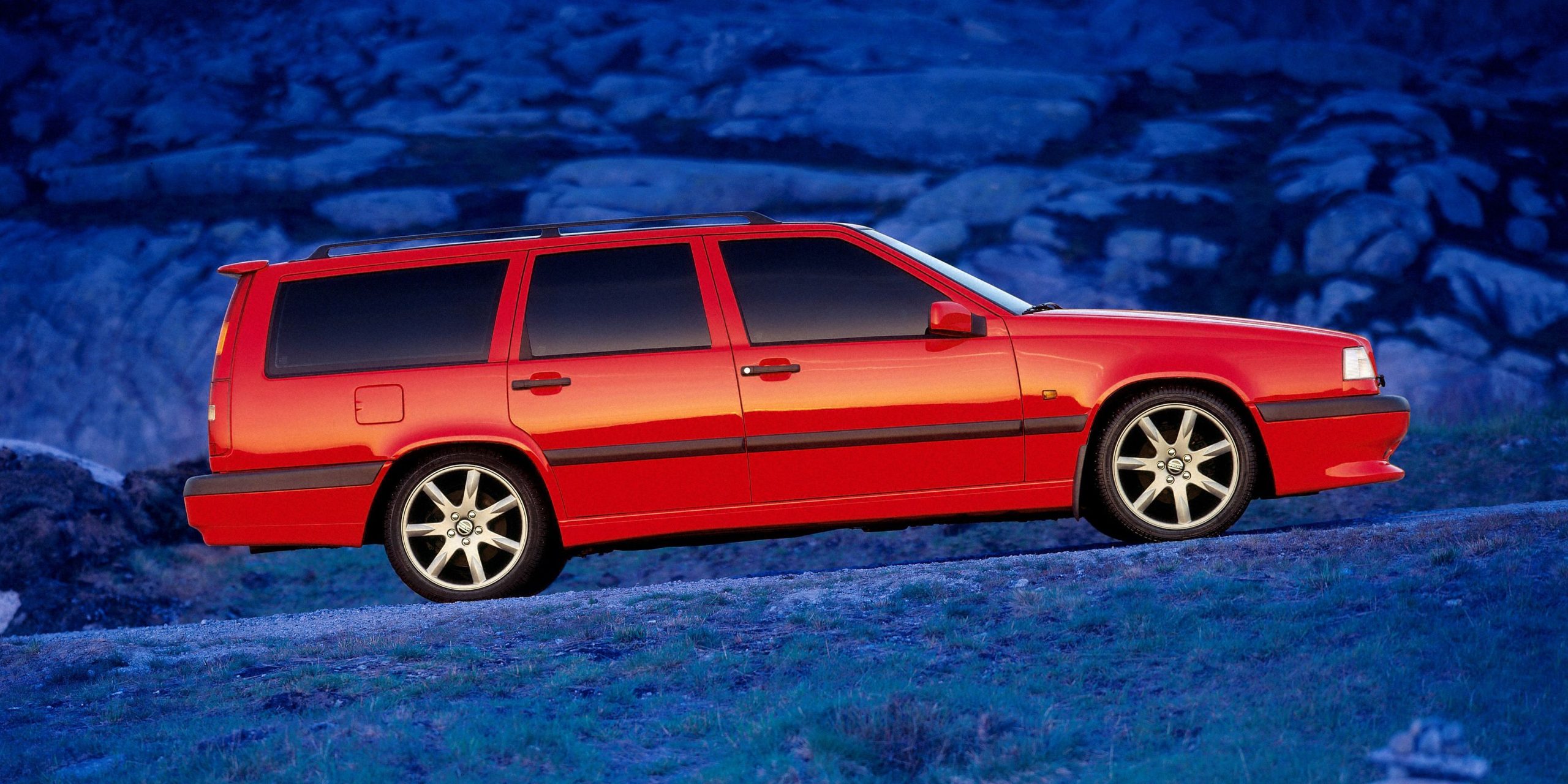
What made the 850 R particularly special was its racing pedigree. Volvo shocked the motorsport world by entering the 850 Estate in the British Touring Car Championship the sight of a boxy wagon battling purpose-built race cars became iconic.
While the road going R Estate didn’t share many components with the race version, it benefited from the performance credibility established on the track.
The 850 R’s performance advantage extends beyond straight-line acceleration. Its factory sport suspension, featuring stiffer springs, dampers, and anti-roll bars, gives it surprising agility that can catch exotic car owners off guard on winding roads.
The addition of subtle aerodynamic enhancements, including a rear spoiler, front lip, and side skirts, improved high-speed stability without drawing undue attention.
Today, with period-correct modifications and modern tire technology, a well-maintained 850 R Estate can still deliver shocking performance.
Its combination of practical wagon utility, bulletproof Volvo reliability, and unexpected speed makes it the quintessential sleeper a vehicle that continues to surprise unsuspecting drivers of much more expensive machinery while comfortably carrying a family and their luggage.
2. Buick Regal GNX
The 1987 Buick Regal GNX represents perhaps the most legendary American sleeper car ever produced a menacing all-black Buick with performance capabilities that terrorized Corvettes, Ferraris, and Lamborghinis in its day and remains impressive even by modern standards.
Often called “Darth Vader’s car,” the GNX (Grand National Experimental) was the ultimate evolution of Buick’s turbocharged G-body platform.
What made the GNX extraordinary was its powertrain a 3.8-liter turbocharged V6 officially rated at 276 horsepower and 360 lb-ft of torque, though widely believed to be significantly underrated.
In reality, the engine likely produced closer to 300 horsepower and 400 lb-ft of torque. Rather than the traditional V8 muscle car formula, Buick embraced turbocharging technology that was ahead of its time, creating a car that could run 0-60 mph in 4.7 seconds and a quarter-mile in 13.4 seconds quicker than contemporary Ferraris and Porsches.
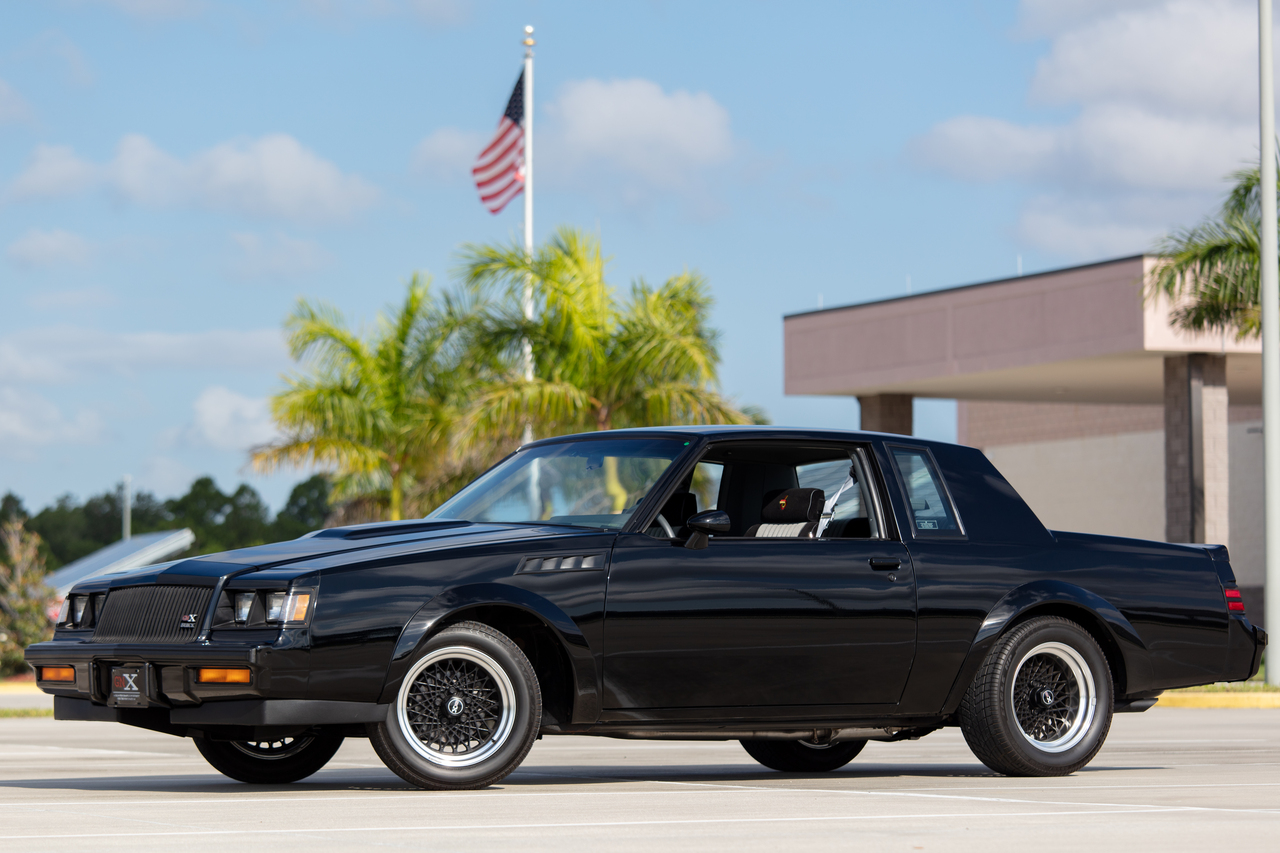
The GNX’s sleeper status came from its Regal body style a formal, boxy coupe typically associated with retirement communities rather than drag strips.
While the blacked-out appearance and subtle fender flares provided some visual cues to its performance potential, nothing about its conservative GM G-body design suggested its supercar-slaying capabilities.
Only 547 GNX examples were produced, making it both rare and highly coveted among collectors.
What’s particularly impressive about the GNX is how well its performance holds up even against modern exotic cars.
Its combination of massive low-end torque and relatively light weight allows properly maintained examples to still shock owners of contemporary high-performance vehicles.
The turbocharged V6 responds exceptionally well to modern modifications, with enthusiast-owned examples easily producing over 500 horsepower while maintaining the car’s sleeper aesthetic.
The GNX’s influence extends beyond its performance numbers. It demonstrated that American manufacturers could build world-class performance cars without V8 engines, pioneered performance turbocharging technology that would become industry standard decades later, and proved that extraordinary performance could come in unexpected packages a philosophy that defines the very concept of the sleeper car.
3. Mercedes-Benz E63 AMG Wagon
The Mercedes-Benz E63 AMG Wagon represents the ultimate wolf in sheep’s clothing a family hauler with supercar performance credentials hidden beneath its practical estate bodywork.
Particularly in its most recent iterations, this unassuming luxury wagon packs performance capabilities that can embarrass exotic sports cars costing twice as much or more.
The current generation E63 S Wagon houses a hand-built 4.0-liter twin-turbocharged V8 producing a staggering 603 horsepower and 627 lb-ft of torque.
This monstrous powerplant enables the wagon to accelerate from 0-60 mph in just 3.4 seconds quicker than many Lamborghinis and Ferraris and continue to a limited top speed of 180 mph.
Perhaps more impressively, this performance comes without sacrificing the practical attributes that make wagons appealing to families: a spacious cargo area, comfortable seating for five, and renowned Mercedes-Benz safety features.
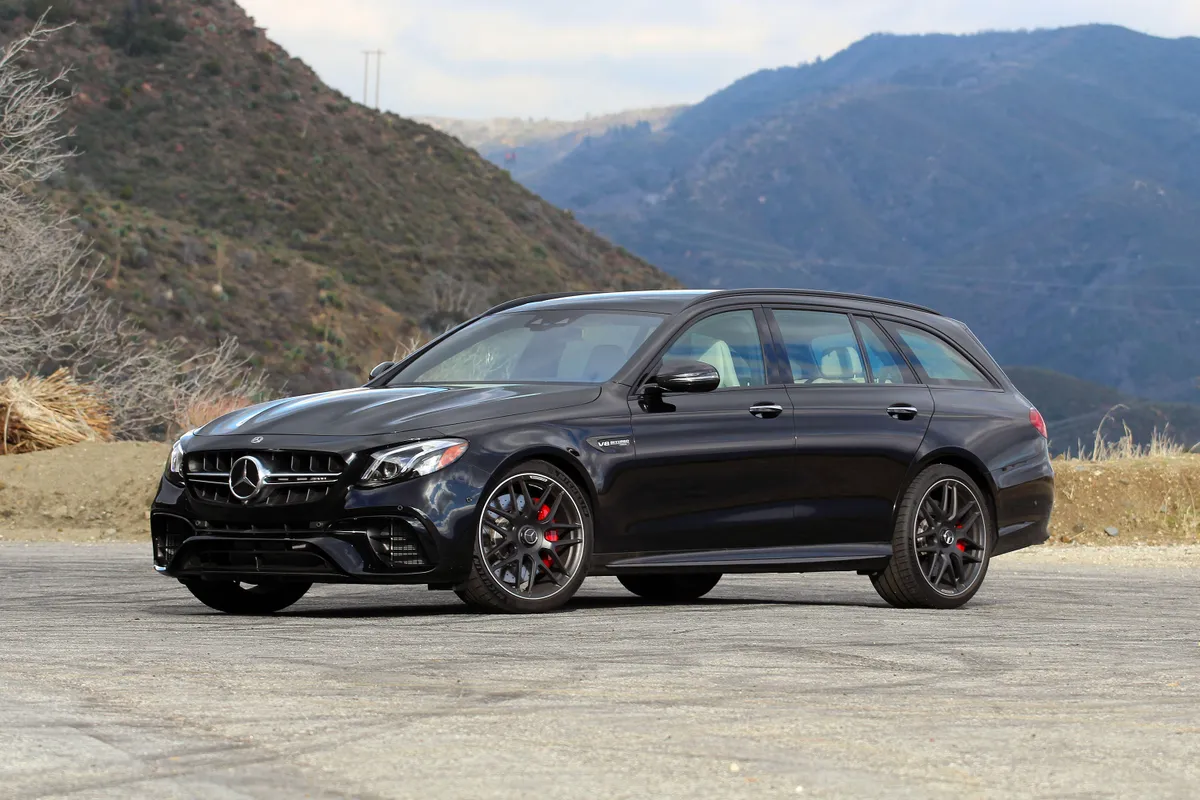
What makes the E63 Wagon such an effective sleeper is its visual restraint. Despite its performance credentials, it largely resembles a standard E-Class wagon, with only subtle visual cues like larger air intakes, quad exhaust outlets, and discreet badging hinting at its capabilities.
To the untrained eye, it’s simply another luxury station wagon perhaps driven by a well to do suburban parent rather than an enthusiast with supercar-beating intentions.
The E63’s sleeper status is enhanced by its sophisticated all wheel drive system, which gives it exceptional traction and allows it to deploy its tremendous power effectively in all weather conditions.
The latest models even feature a “Drift Mode” that sends power exclusively to the rear wheels, enabling tail-sliding antics that seem entirely incongruous with the car’s practical wagon body style.
For enthusiasts who value the duality of a vehicle that can both dominate at the track and handle family road trips, the E63 AMG Wagon offers an unmatched combination of performance and practicality.
Its ability to fly under the radar makes it all the more appealing to those who prefer its automotive performance without the attention and flash that typically accompany exotic cars.
When a family wagon can outrun a Lamborghini while carrying luggage and a dog in the back, the sleeper car concept reaches its logical extreme.
4. Ford Taurus SHO (1st Generation)
The first-generation Ford Taurus SHO (Super High Output) perfectly embodies the sleeper car philosophy of an ordinary family sedan hiding extraordinary performance capabilities that could challenge exotic sports cars of its era.
Launched in 1989, the Taurus SHO represented Ford’s unexpected foray into high-performance sedans, creating what many consider America’s first modern sports sedan.
What made the SHO special was its remarkable engine a Yamaha-designed and built 3.0-liter V6 producing 220 horsepower and 200 lb-ft of torque.
This high-revving, naturally aspirated masterpiece featured dual overhead cams, 24 valves, and a 7,300 RPM redline at a time when most American engines were low-revving pushrod designs.
Mated exclusively to a 5-speed manual transmission, this powertrain could propel the Taurus from 0-60 mph in under 7 seconds and to a top speed of 143 mph figures that rivaled many European sports cars of the era.
The SHO’s sleeper status was enhanced by Ford’s decision to maintain the Taurus’s conservative styling.
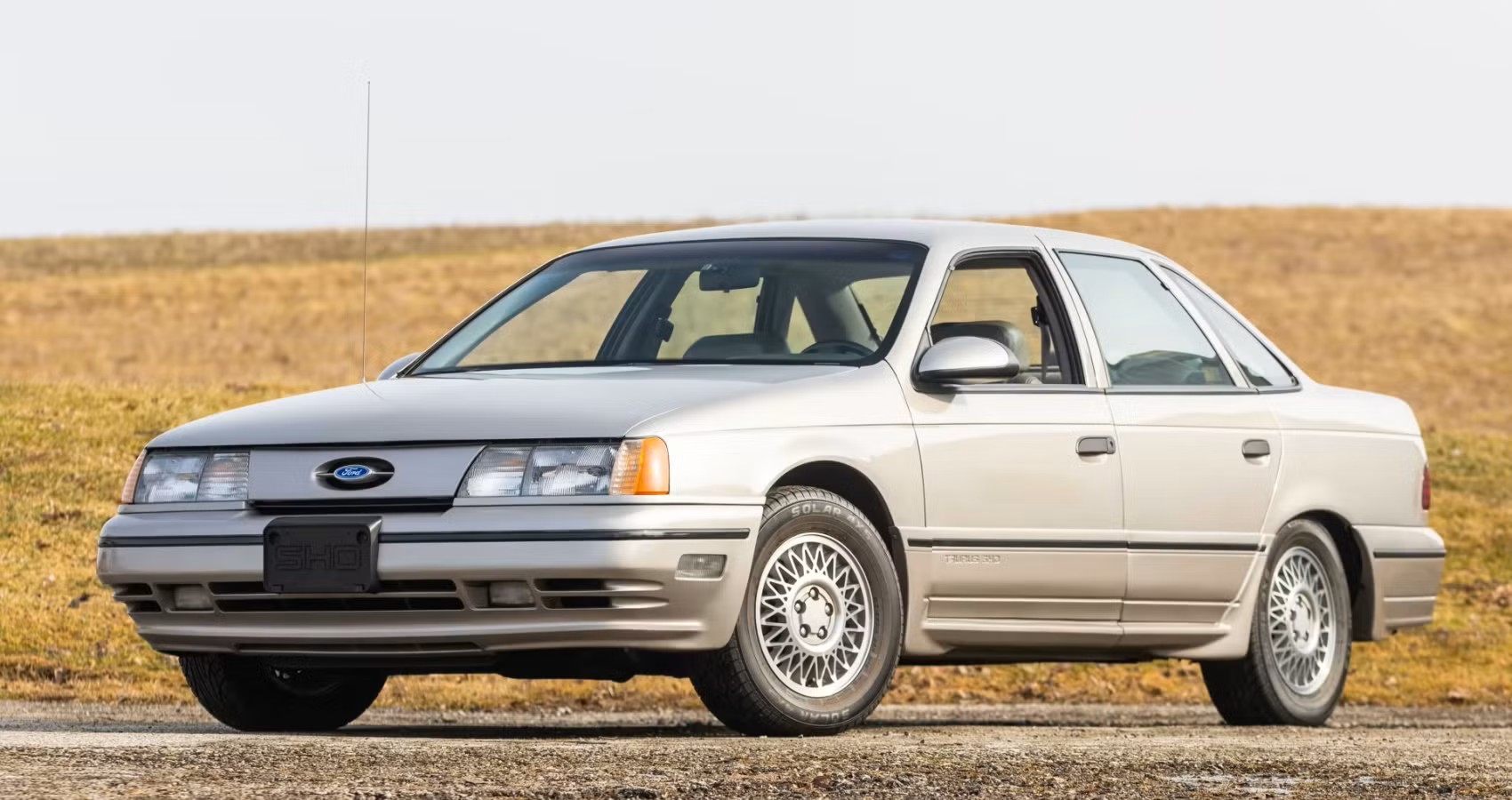
Apart from subtle enhancements like unique wheels, a modest body kit, and dual exhaust outlets, the SHO looked nearly identical to the standard Taurus that dominated American roads as rental cars and family transportation.
Even the interior remained largely unchanged, with only sport seats, a leather-wrapped steering wheel, and a specific instrument cluster differentiating it from lesser models.
What made the SHO particularly impressive was its holistic approach to performance. Beyond the special engine, Ford engineers upgraded the suspension, brakes, and steering to create a surprisingly capable handling package.
Road & Track magazine famously declared that the SHO offered “the road manners of a BMW 535i for the price of a 318i,” high praise that reflected the car’s European-inspired driving dynamics.
Today, well-preserved first-generation SHOs remain compelling sleepers, particularly given their increasing rarity and the fact that few people remember or recognize their significance.
While they may not outrun the very latest exotics in absolute terms, they can still be surprised with their performance and driver engagement especially considering they cost less than $20,000 when new.
The first-generation SHO established a formula that influenced many future sleeper sedans: extraordinary performance hidden beneath ordinary styling.
Also Read: 10 Supercars With the Most Luxurious Interiors That Redefine Comfort and Innovation
5. Nissan Stagea Autech 260RS
The Nissan Stagea Autech 260RS represents perhaps the ultimate Japanese sleeper essentially a Skyline GT-R disguised as a family station wagon.
Produced in limited numbers between 1996 and 2001, this rare JDM special offers supercar-rivaling performance wrapped in the most practical and unassuming package imaginable.
What makes the Autech 260RS version of the Stagea truly special is its drivetrain, which was transplanted almost entirely from the legendary R33 Skyline GT-R.
Beneath its conservative wagon body lies the GT-R’s RB26DETT engine a twin-turbocharged 2.6-liter inline-six officially rated at 276 horsepower due to Japan’s “gentleman’s agreement” limiting stated power outputs, but producing closer to 320 horsepower in stock form.
More importantly, this engine is renowned for its robust construction and tremendous tuning potential, with modified examples easily producing over 600 horsepower with appropriate upgrades.
The GT-R connection extends beyond the engine. The 260RS also received the Skyline’s sophisticated ATTESA E-TS all wheel drive system with advanced torque vectoring capabilities, along with the Super-HICAS four wheel steering system.
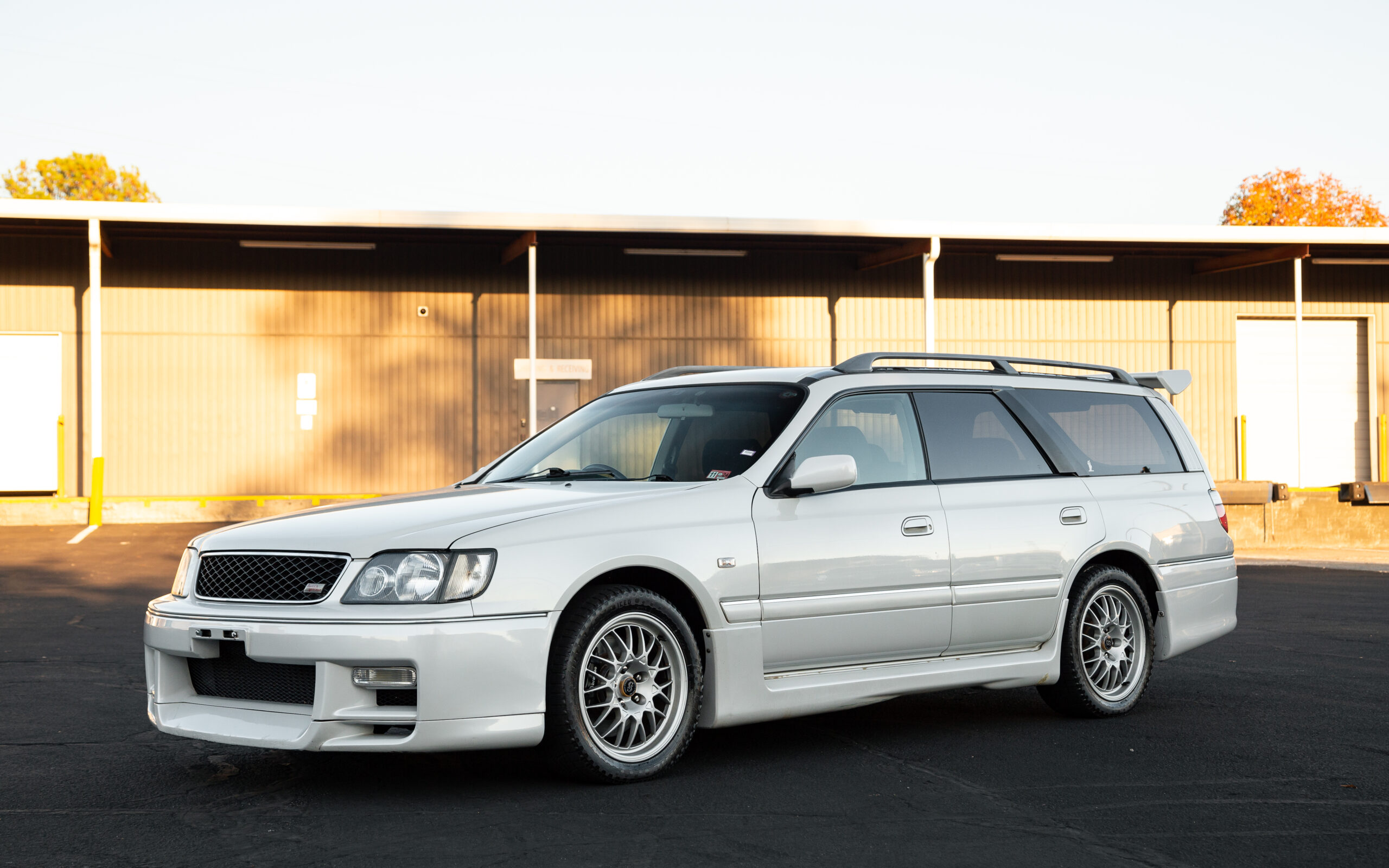
These technologies give wagon handling capabilities that can embarrass modern sports cars on winding roads, particularly in adverse weather conditions where its all wheel drive system provides exceptional traction.
What solidifies the Stagea 260RS’s sleeper status is its restrained appearance. Despite housing supercar-level components, it looks essentially like a standard Japanese domestic market wagon.
Only subtle clues like specific wheels, front bumper, and badges hint at its performance potential. To the untrained eye, it’s simply a practical family vehicle rather than a GT-R in disguise.
As these vehicles have become eligible for import to the United States and other markets under 25-year importation rules, the Stagea 260RS has developed a cult following among enthusiasts who appreciate its unique combination of supercar performance and wagon practicality.
Its rarity with fewer than a thousand examples produced and its connection to the iconic Skyline GT-R have made it highly sought after by collectors and enthusiasts seeking the ultimate Japanese sleeper, capable of outperforming exotic cars while flying completely under the radar.
6. Chevrolet SS
The Chevrolet SS stands as one of the most perfectly executed sleeper cars of the modern era a vehicle so anonymous in appearance that Chevrolet salespeople often had to explain to curious customers that it wasn’t simply a higher trim level Malibu.
Sold in the United States from 2014 to 2017, this under the radar super sedan packed Corvette power in a package so subdued that even car enthusiasts might miss it in traffic.
Beneath its forgettable exterior, the SS housed a 6.2-liter LS3 V8 engine shared with the C6 Corvette, producing 415 horsepower and 415 lb-ft of torque.
This potent powerplant could propel the sedan from 0-60 mph in just 4.7 seconds and through the quarter-mile in 13.0 seconds performance figures that rivaled many exotic sports cars costing three times as much.
Later models offered a six-speed manual transmission option alongside the standard six-speed automatic, further enhancing its appeal to driving enthusiasts.
The SS’s exceptional performance wasn’t limited to straight-line acceleration.
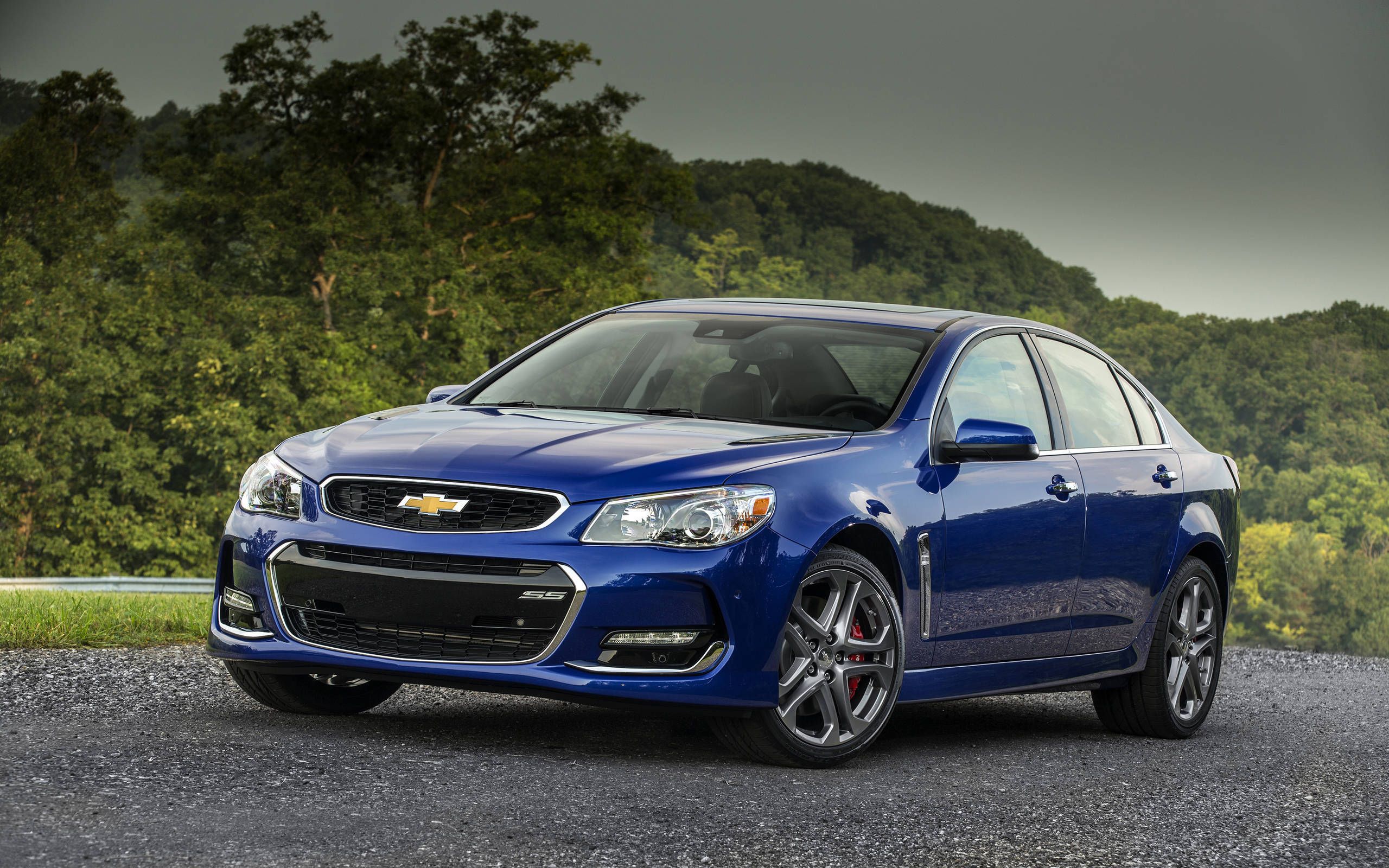
Based on Australia’s Holden Commodore, the SS featured sophisticated suspension geometry, including a multilink independent rear suspension that provided handling capabilities far beyond what its conservative styling suggested.
Standard magnetic ride control damper technology shared with Corvettes and Cadillacs allowed the SS to transition from a comfortable cruiser to a capable corner carver at the press of a button.
What made the SS the quintessential modern sleeper was its deliberately understated styling. Despite housing components that could challenge exotic sports cars, it featured none of the aggressive design elements typically associated with high-performance vehicles.
No massive wings, no bulging fenders, no quad exhaust tips just clean, anonymous styling that could easily be mistaken for any mid-size sedan in a parking lot.
The SS’s rarity enhances its sleeper status. With fewer than 13,000 examples sold over four model years, spotting one remains uncommon.
This limited production resulted from GM’s strategic decision to import a fixed number of vehicles from Australia rather than a lack of capability.
Today, well-maintained examples command premium prices among enthusiasts who appreciate the SS for what it represents: perhaps the last traditional rear wheel drive, V8-powered sports sedan that prioritizes driving dynamics and stealth over flashy styling and marketing hype.
7. Audi RS2 Avant
The Audi RS2 Avant holds a special place in automotive history as both the first RS-badged Audi and one of the most influential sleeper cars ever produced.
Developed in partnership with Porsche and produced for just one year (1994-1995), this unassuming station wagon could outrun most sports cars of its era and remains impressively quick even by modern standards.
At the heart of the RS2 was a heavily modified version of Audi’s 2.2-liter turbocharged five-cylinder engine, producing 311 horsepower and 302 lb-ft of torque.
While these figures might seem modest today, they were extraordinary for a family wagon in the mid-1990s.
The Porsche influence extended beyond engine tuning, with the 911’s brake system, wheels, and exterior mirrors incorporated into the design.
These performance upgrades allowed the RS2 to accelerate from 0-60 mph in just 4.8 seconds quicker than both the Porsche 911 Turbo and Ferrari 456 of the same period.
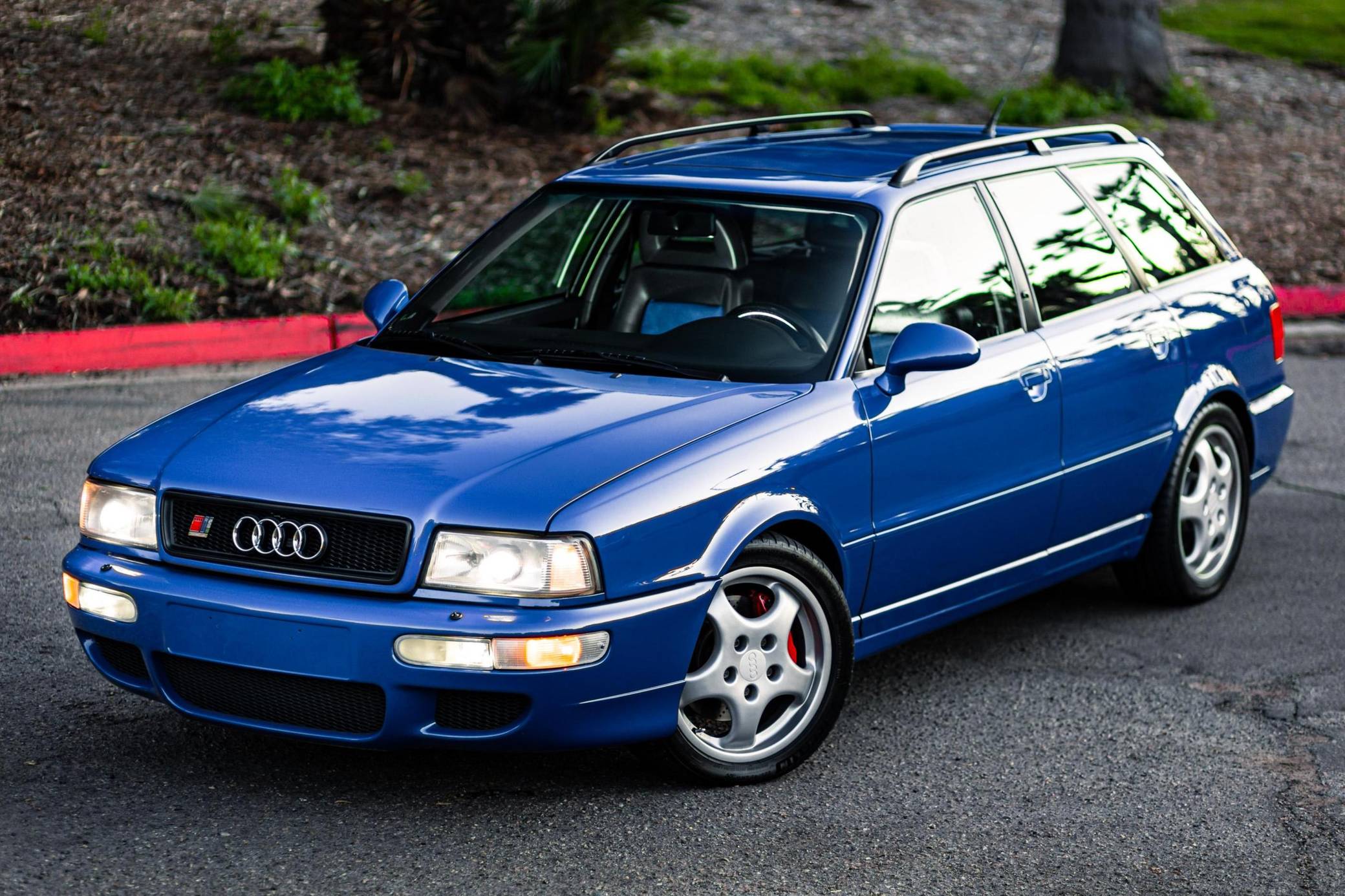
What solidified the RS2’s status as the ultimate sleeper was its practical wagon body style.
Despite its supercar-rivaling performance, it remained a fully functional family vehicle with generous cargo capacity, comfortable seating for five, and the all-weather capability provided by Audi’s Quattro all wheel drive system.
The only visual cues to its extraordinary performance were subtle Porsche-designed 17-inch wheels, slightly flared wheel arches, and modest RS badging nothing that would alert the uninitiated to its capabilities.
The RS2’s influence extends far beyond its limited production run of just 2,891 units. It established the template for future Audi RS models: understated styling, exceptional performance, practical packaging, and all-weather capability.
More importantly, it demonstrated that station wagons could deliver driving thrills on par with dedicated sports cars a concept that has influenced high-performance wagons from numerous manufacturers in the decades since.
Today, the RS2 Avant is highly sought after by collectors and enthusiasts, with well-maintained examples commanding premium prices.
Its combination of rarity, historical significance, and continuing ability to surprise unsuspecting sports car owners with its remarkable performance make it one of the most desirable sleeper cars ever produced a vehicle that helped redefine what a practical family car could be.
8. Mercury Marauder
The Mercury Marauder represents one of the most delightfully unexpected American sleepers a full-size luxury sedan with the heart of a muscle car.
Produced for just two years (2003-2004), this sinister-looking four-door revived a storied Mercury nameplate and created one of the most distinctive sleeper cars of the early 2000s.
What made the Marauder special was its powertrain a naturally aspirated 4.6-liter DOHC V8 producing 302 horsepower and 318 lb-ft of torque, paired with a 4-speed automatic transmission driving the rear wheels.
While these numbers might seem modest compared to modern performance cars, they represented a significant upgrade over the standard Grand Marquis and Crown Victoria models that shared its platform.
The Marauder’s engine featured numerous performance enhancements, including aluminum heads, dual exhaust, and higher compression ratios, enabling it to accelerate from 0-60 mph in around 7 seconds impressive for a vehicle weighing over 4,000 pounds.
The Marauder’s sleeper credentials were enhanced by its association with law enforcement.
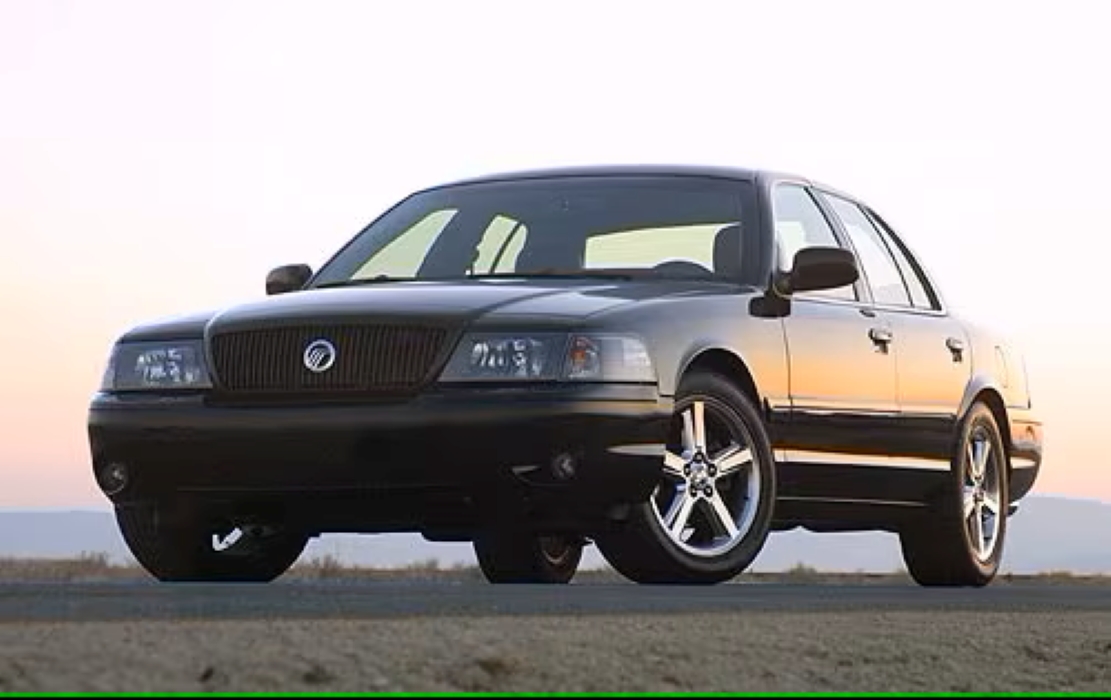
Based on the same Panther platform as the ubiquitous Crown Victoria Police Interceptor, the Marauder benefited from heavy-duty components developed for police duty, including upgraded suspension, brakes, and cooling systems.
These modifications gave it surprising handling capabilities despite its size and weight, allowing it to outperform many more exotic-looking vehicles on winding roads.
What made the Marauder particularly effective as a sleeper was its subtle yet menacing appearance.
Finished exclusively in black, dark blue, silver, or white, the Marauder featured monochromatic styling with limited chrome, 18-inch five-spoke wheels, and dual exhaust outlets.
While these visual cues signaled its performance intentions to enthusiasts, to the average observer, it remained simply a large American sedan perhaps a retired police car rather than a purpose-built performance machine.
With only 11,052 examples produced over two model years, the Marauder’s rarity adds to its appeal among collectors and enthusiasts.
Its combination of luxury sedan comfort, muscle car performance, and police car durability created a unique package that continues to surprise unsuspecting drivers.
While it may not outrun the very latest exotic sports cars in absolute terms, its performance remains impressive for its size and era, making it one of the most distinctive American sleeper cars of the 21st century.
9. Mazdaspeed6
The Mazdaspeed6 stands as one of the most effective Japanese sleepers a midsize family sedan hiding rally car-inspired performance capabilities beneath its conventional exterior.
Produced for just two model years (2006-2007), this rare Mazda combined sophisticated all-wheel drive, turbocharging, and handling prowess in a package that flew completely under the radar of most observers.
At the heart of the Mazdaspeed6 was a 2.3-liter turbocharged direct-injection four-cylinder engine producing 274 horsepower and 280 lb-ft of torque.
This potent powerplant was paired exclusively with a six-speed manual transmission and a complex Active Torque Split all wheel drive system that could send up to 50% of power to the rear wheels.
This sophisticated drivetrain enabled the sedan to accelerate from 0-60 mph in just 5.4 seconds and through the quarter-mile in 14.1 seconds performance that rivaled many dedicated sports cars of its era.
What made the Mazdaspeed6 such an effective sleeper was its restrained styling. Despite its significant performance credentials, it looked nearly identical to the standard Mazda6 sedan, with only subtle visual cues like a modest hood scoop, slightly more aggressive front fascia, dual exhaust outlets, and unique 18-inch wheels differentiating it from its mainstream counterpart.
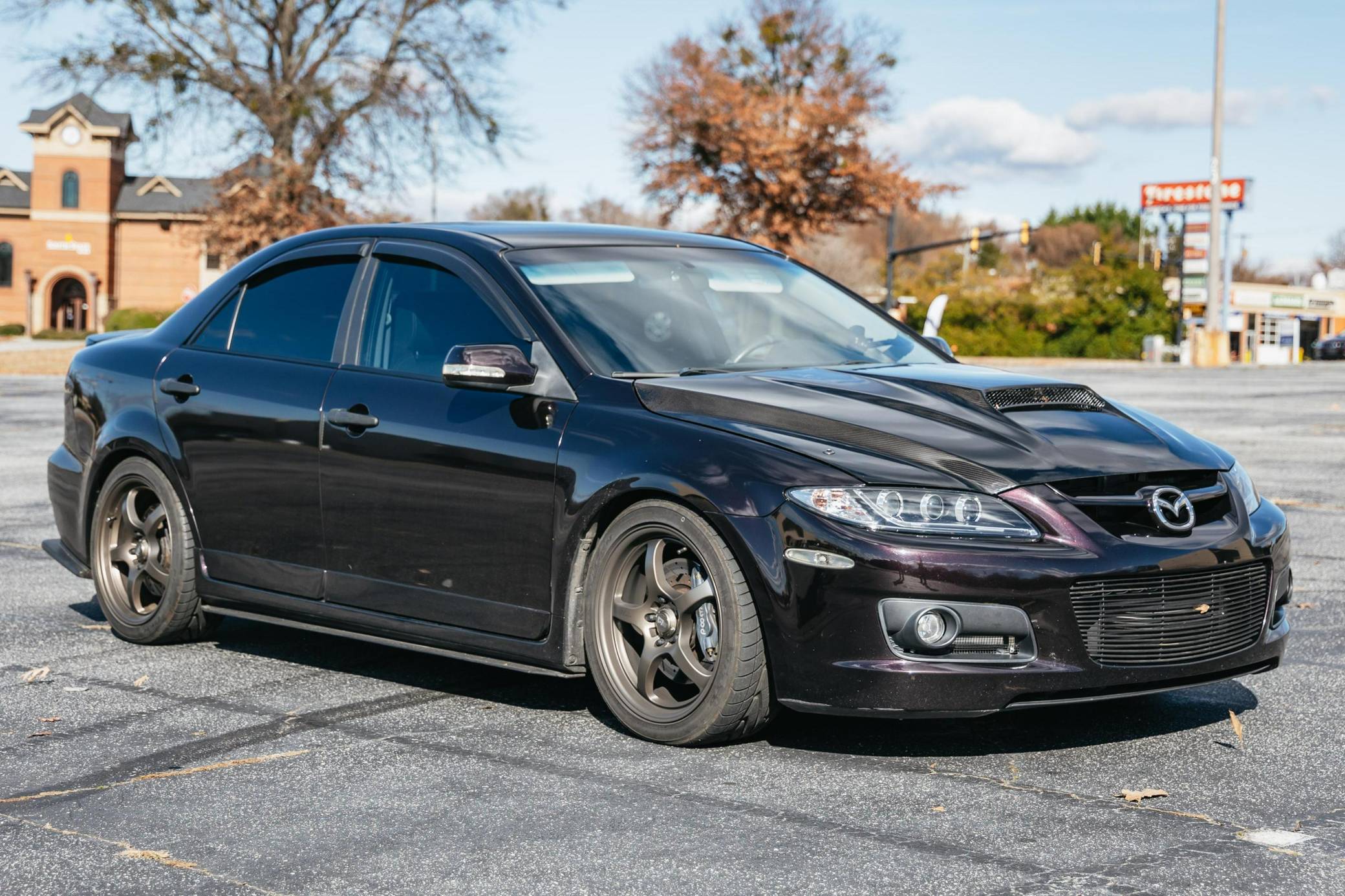
To the untrained eye, it was simply another Japanese family sedan rather than a turbocharged, all-wheel-drive performance machine.
The Mazdaspeed6’s sleeper status was further enhanced by Mazda’s comprehensive approach to performance.
Beyond the powerful engine and sophisticated drivetrain, engineers significantly reinforced the chassis with additional bracing, upgraded the suspension with stiffer springs and dampers, and installed larger brakes.
These modifications gave the sedan handling capabilities that could surprise exotic sports car owners on winding roads, particularly in adverse weather conditions where its all wheel drive system provided a significant advantage.
With fewer than 10,000 examples sold in North America, the Mazdaspeed6 remains relatively rare, adding to its appeal among enthusiasts.
Its combination of practical sedan utility, sophisticated performance technology, and understated styling make it a perfect sleeper capable of surprising much more expensive vehicles while maintaining the practicality and anonymity of a conventional family car.
Today, well-maintained examples are increasingly sought after by collectors who appreciate its unique blend of performance and subtlety.
10. Dodge Charger Hellcat
The Dodge Charger Hellcat represents a modern interpretation of the sleeper concept a practical four-door sedan that packs supercar-slaying performance beneath its relatively conventional exterior.
While more visually aggressive than most traditional sleepers, its familiar sedan silhouette and mainstream brand badge hide performance capabilities that can embarrass exotic cars costing several times as much.
What makes the Charger Hellcat extraordinary is its powertrain a supercharged 6.2-liter Hemi V8 producing a staggering 707 horsepower in original form and up to 797 horsepower in the later Redeye version.
This monstrous powerplant enables the four-door sedan to accelerate from 0-60 mph in just 3.6 seconds and achieve a top speed exceeding 200 mph performance figures that surpass many contemporary supercars from Ferrari, Lamborghini, and McLaren.
Perhaps more impressively, it delivers this performance while providing comfortable seating for five adults and a spacious trunk.
The Charger Hellcat’s sleeper status comes from its conventional sedan body style and relatively restrained styling compared to its two-door Challenger sibling.
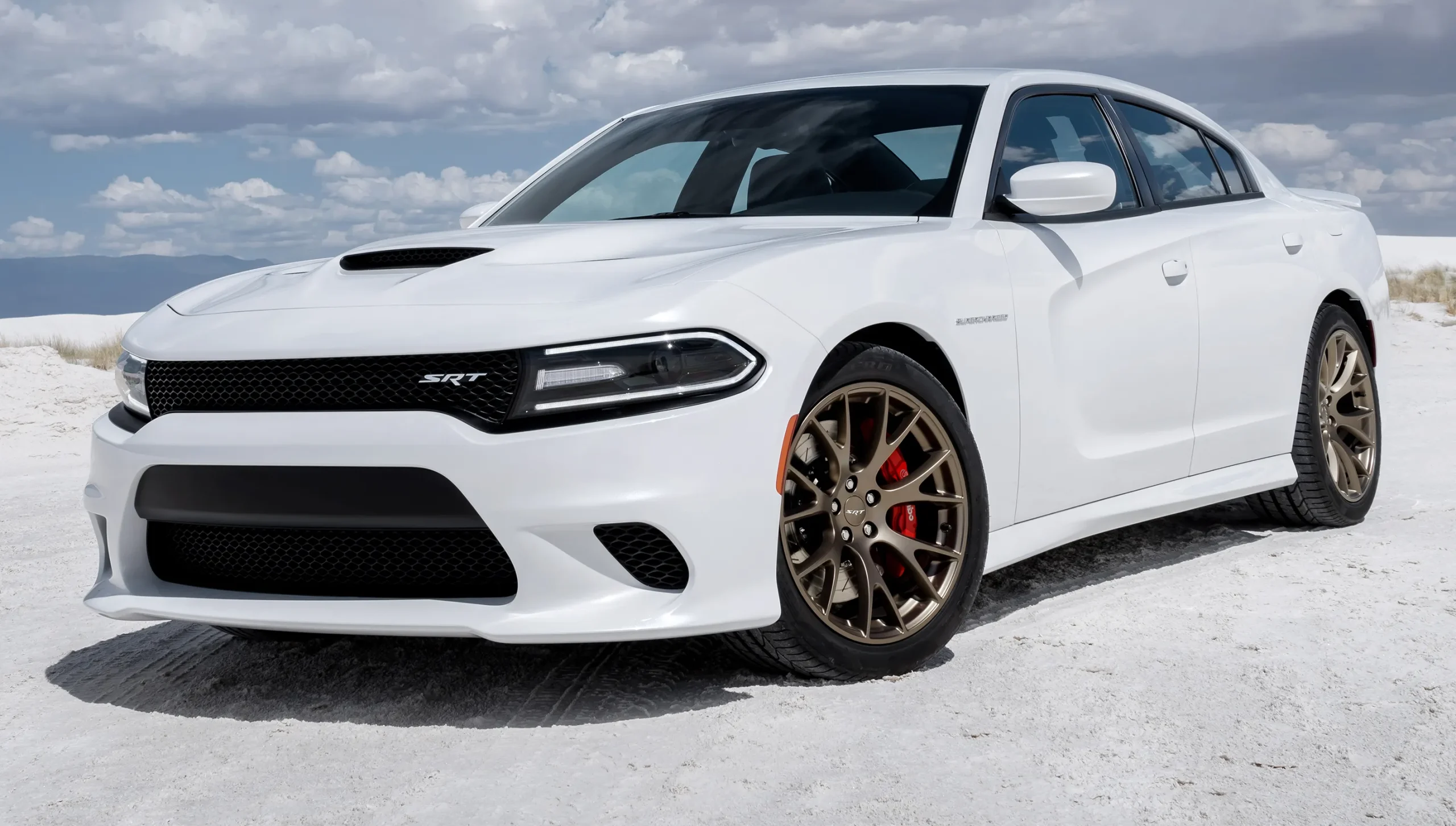
While performance cues like a hood scoop, modest rear spoiler, and badging hint at its capabilities, to the casual observer, it resembles a typical American sedan rather than a supercar killer.
This visual restraint makes the Hellcat’s extraordinary performance all the more shocking to unsuspecting exotic car owners who find themselves outrun by what appears to be an ordinary family car.
What enhances the Hellcat’s sleeper credentials is its everyday usability. Unlike many high-performance vehicles, it offers comfortable suspension settings for daily driving, modern convenience features, and the practicality of four doors and a spacious interior.
This duality allows owners to use the Hellcat as practical transportation while having supercar-beating performance available at a moment’s notice.
The Charger Hellcat’s value proposition further cements its position as a modern sleeper icon. With a starting price under $75,000, it delivers performance capabilities that match or exceed exotic cars costing $250,000 or more.
This combination of extraordinary performance, practical packaging, and relative affordability has established the Charger Hellcat as perhaps the ultimate modern sleeper a vehicle that continues the American tradition of hiding outrageous performance in unassuming packages.
11. Volvo S60/V60 Polestar
The Volvo S60 and V60 Polestar models represent perhaps the most Swedish interpretation of the sleeper car concept vehicles that combine sophisticated performance engineering with the brand’s traditionally understated design language to create machines capable of surprising exotic car owners while maintaining Volvo’s reputation for safety and practicality.
Produced in limited numbers since 2014, the Polestar-tuned S60 sedan and V60 wagon initially featured a highly modified turbocharged inline-six producing 350 horsepower, later replaced by a dual-charged (both supercharged and turbocharged) four-cylinder generating 367 horsepower.
This sophisticated powerplant is paired with an all wheel drive system and an eight-speed automatic transmission with steering wheel-mounted paddle shifters.
The result is an impressive performance of 0-60 mph in just 4.4 seconds and a limited top speed of 155 mph figures that rival dedicated sports cars from prestigious manufacturers.
What makes the Polestar Volvos particularly effective sleepers is their visual restraint.
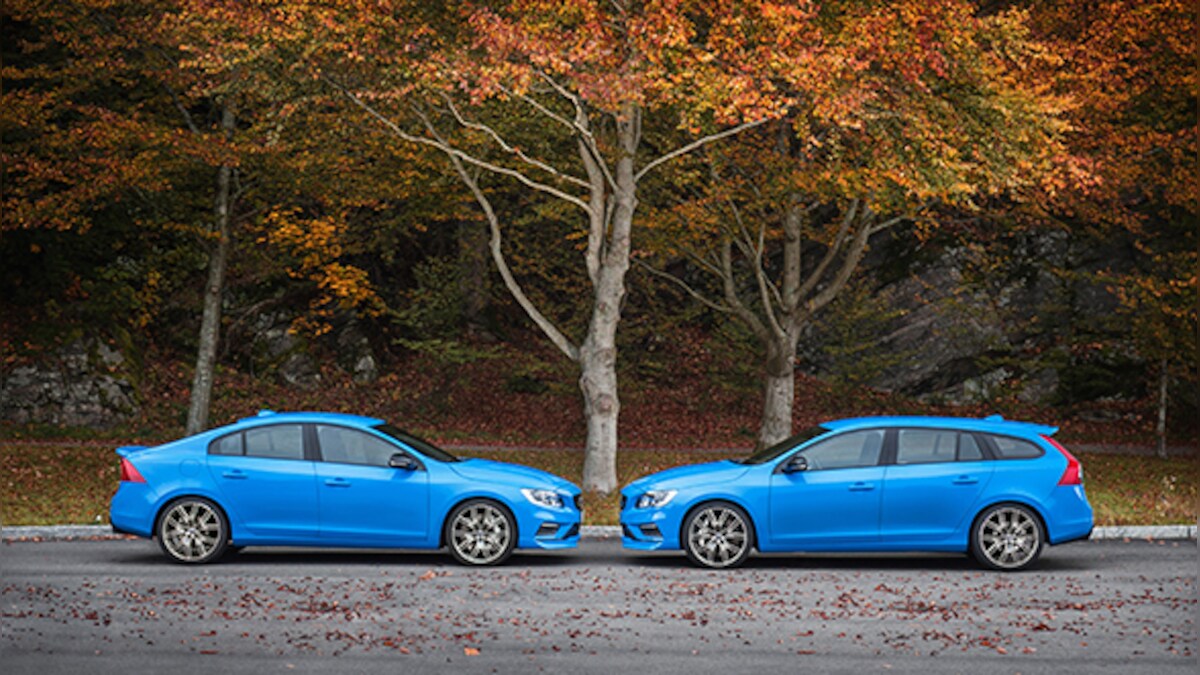
Despite their significant performance credentials, they maintain Volvo’s clean, understated design language, with only subtle enhancements like distinctive wheels, modest aerodynamic additions, and discreet Polestar badges differentiating them from standard models.
The signature Rebel Blue paint option (officially called “Swedish Racing Blue”) is perhaps the most obvious visual cue, though these vehicles are available in more subdued colors for those seeking maximum stealth.
The Polestar treatment extends far beyond the engine bay. These models feature over 80 modifications compared to standard Volvos, including Öhlins adjustable dampers, substantial chassis reinforcement, Brembo brakes, and carbon fiber aerodynamic elements.
These comprehensive upgrades give these vehicles handling capabilities that can surprise exotic car owners on winding roads, particularly in adverse weather conditions where their all wheel drive systems provide a significant advantage.
What solidifies the S60/V60 Polestar’s sleeper status is their retention of Volvo’s core values. Despite their performance capabilities, they maintain the brand’s legendary safety features, comfortable interiors, and practical packaging.
The wagon version offers the particularly delightful contradiction of supercar-rivaling acceleration combined with the ability to transport furniture or pets a duality that epitomizes the sleeper car concept.
Their limited production numbers (fewer than 1,500 worldwide in some years) further enhance their appeal among enthusiasts seeking a rare and unexpected performance machine.
12. Jeep Grand Cherokee Trackhawk
The Jeep Grand Cherokee Trackhawk stands as perhaps the most outrageous interpretation of the sleeper concept a practical family SUV housing supercar-slaying performance beneath its relatively conventional exterior.
While its badges and subtle visual cues hint at its capabilities, nothing about its familiar SUV silhouette prepares bystanders for its extraordinary performance.
At the heart of the Trackhawk lies the same supercharged 6.2-liter Hemi V8 found in Dodge’s Hellcat models, producing a staggering 707 horsepower and 645 lb-ft of torque.
This monstrous powerplant enables the 5,363-pound SUV to accelerate from 0-60 mph in just 3.5 seconds, run the quarter-mile in 11.6 seconds, and reach a top speed of 180 mph performance figures that outpace many dedicated sports cars from prestigious manufacturers like Porsche, Aston Martin, and even Ferrari.
What makes the Trackhawk such an effective sleeper is its practical SUV body style. Despite housing one of the most powerful engines ever installed in a production SUV, it retains the Grand Cherokee’s conventional proportions and family-friendly design.
While performance cues like quad exhaust outlets, distinctive wheels, and subtle badging signal its capabilities to enthusiasts, to casual observers, it resembles a typical premium SUV rather than a supercar killer.
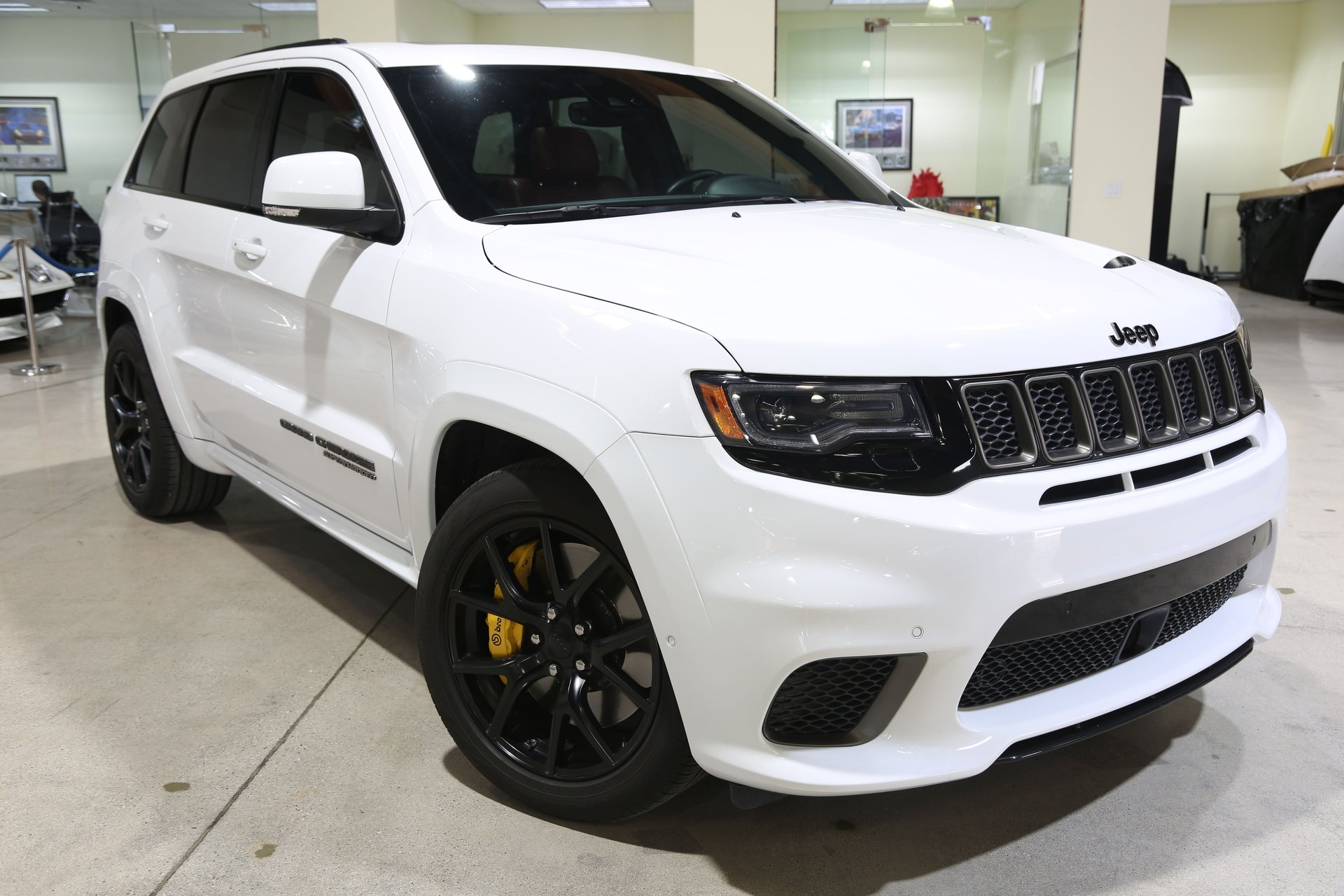
This visual restraint makes its extraordinary performance all the more shocking when it effortlessly outpaces exotic sports cars costing three times as much.
The Trackhawk’s sleeper credentials are enhanced by its everyday usability. Unlike many high-performance vehicles, it offers comfortable seating for five adults, a spacious cargo area, and genuine off-road capability thanks to its sophisticated all wheel drive system.
This remarkable duality allows owners to use the Trackhawk as practical family transportation while having supercar-beating performance available at a moment’s notice.
What truly solidifies the Trackhawk’s position as an ultimate modern sleeper is how comprehensively engineered it is.
Beyond its powerful engine, Jeep upgraded nearly every mechanical component, including Brembo brakes, reinforced driveline components, a sophisticated launch control system, and adaptive dampers.
These enhancements ensure the Trackhawk delivers a cohesive performance experience rather than simply being a powerful engine dropped into an unprepared chassis.
The result is a vehicle that defies physics and expectations a family SUV capable of humbling exotic sports cars while maintaining its practical utility.
Also Read: 10 Most Expensive Luxury Cars That Redefine Prestige and Automotive Excellence

